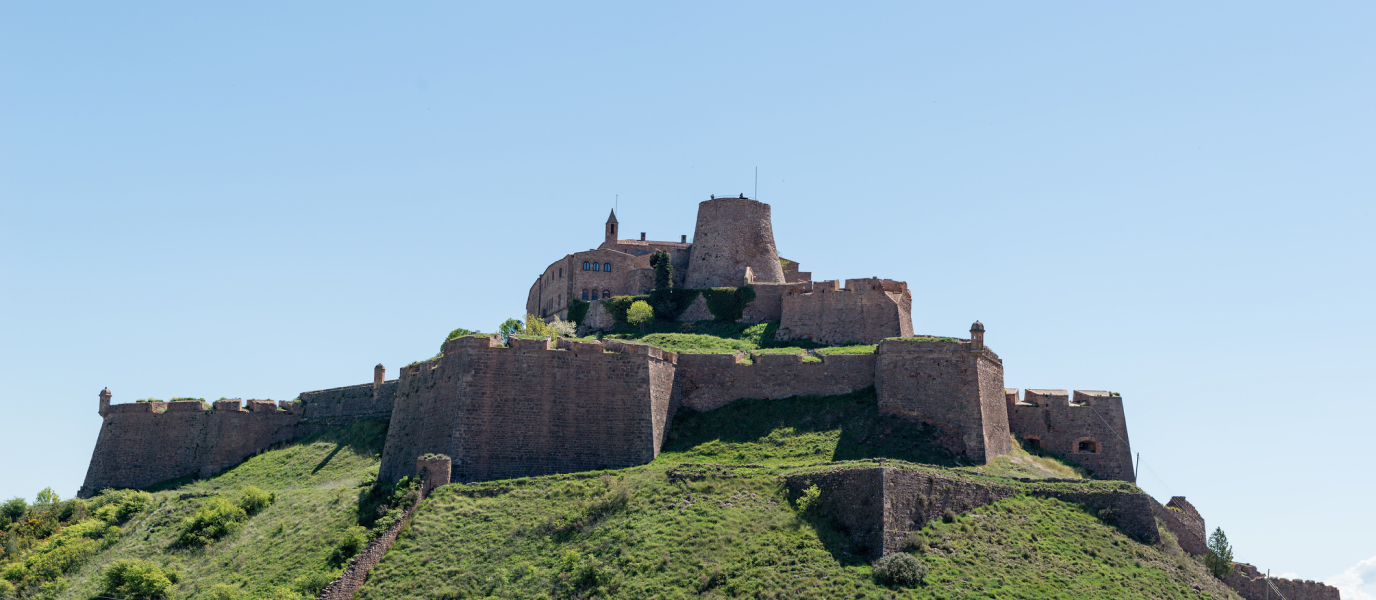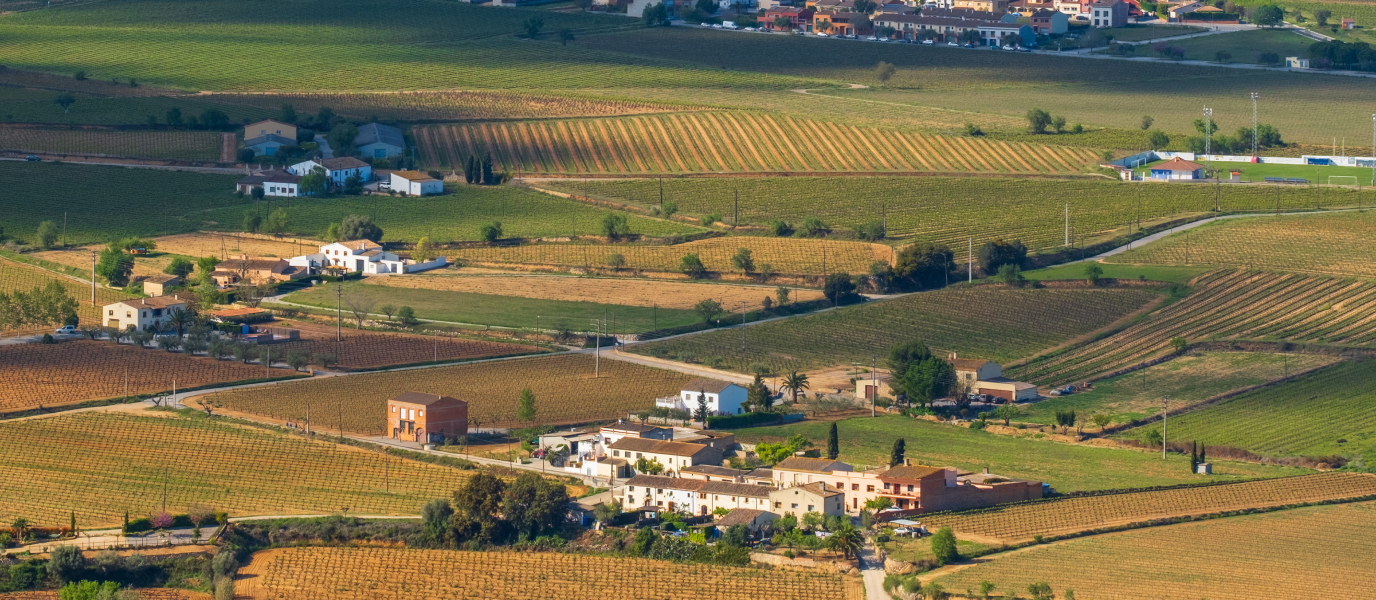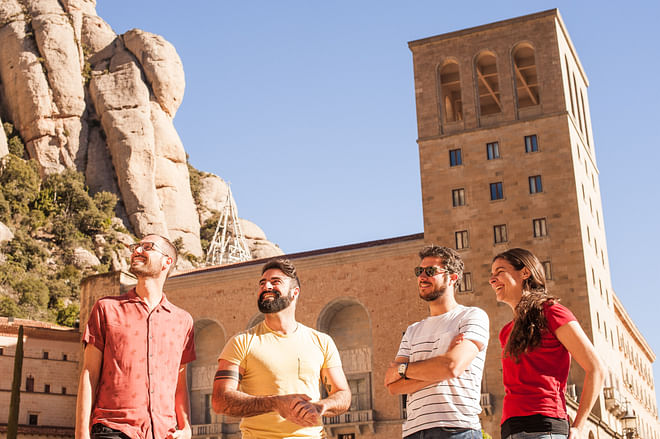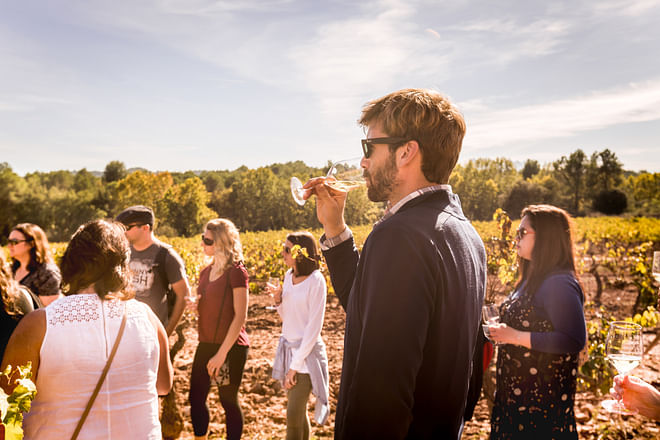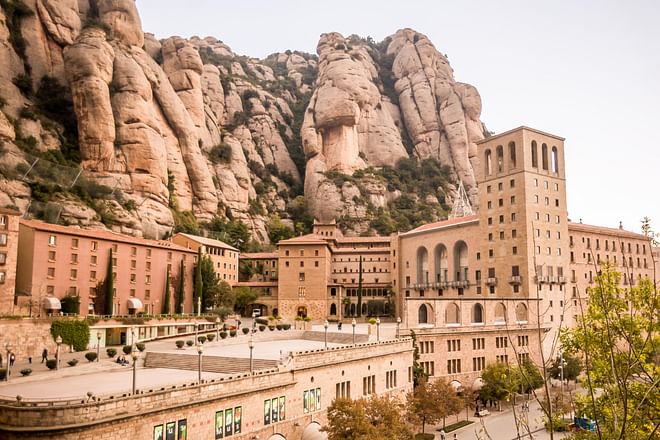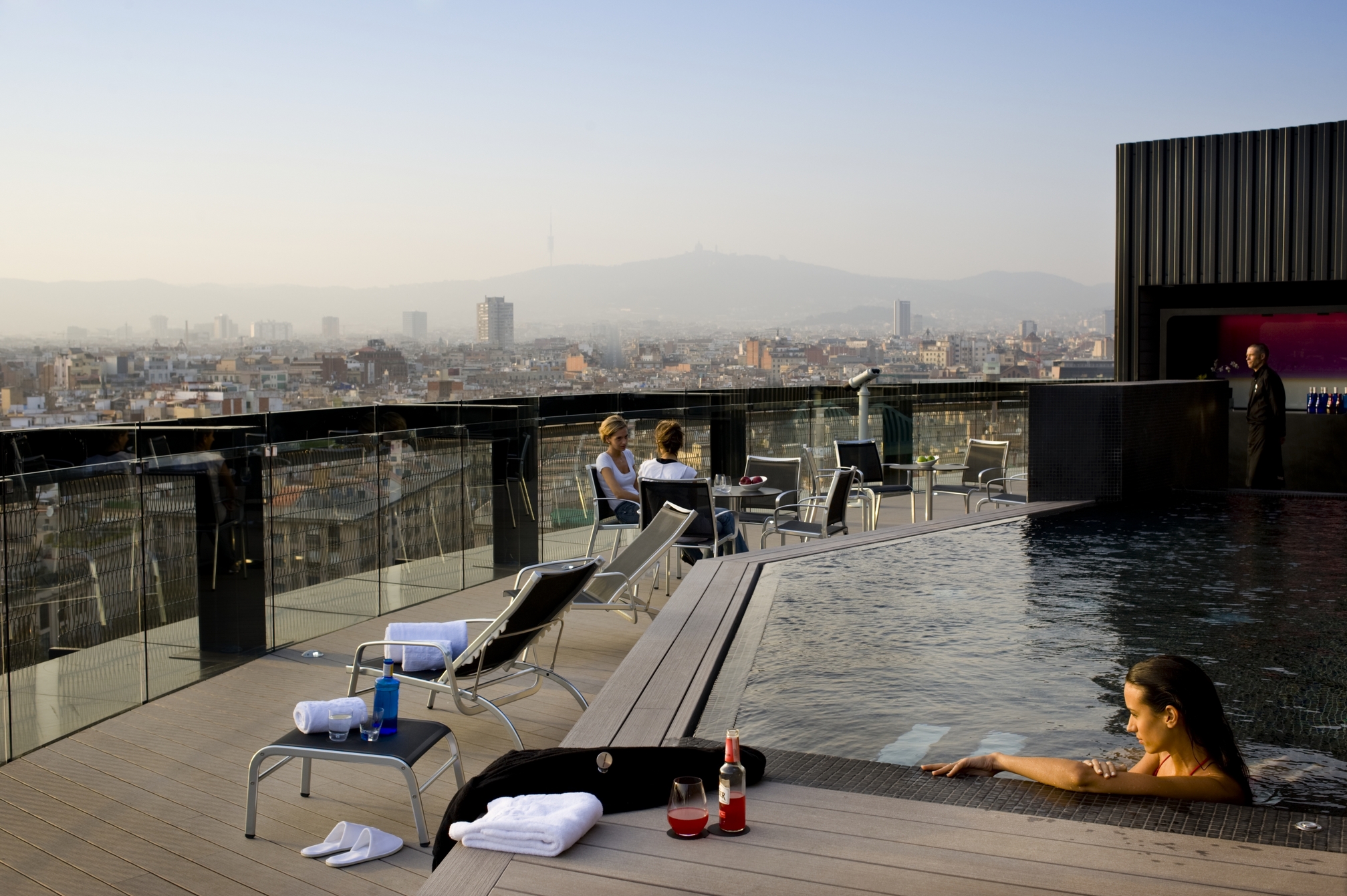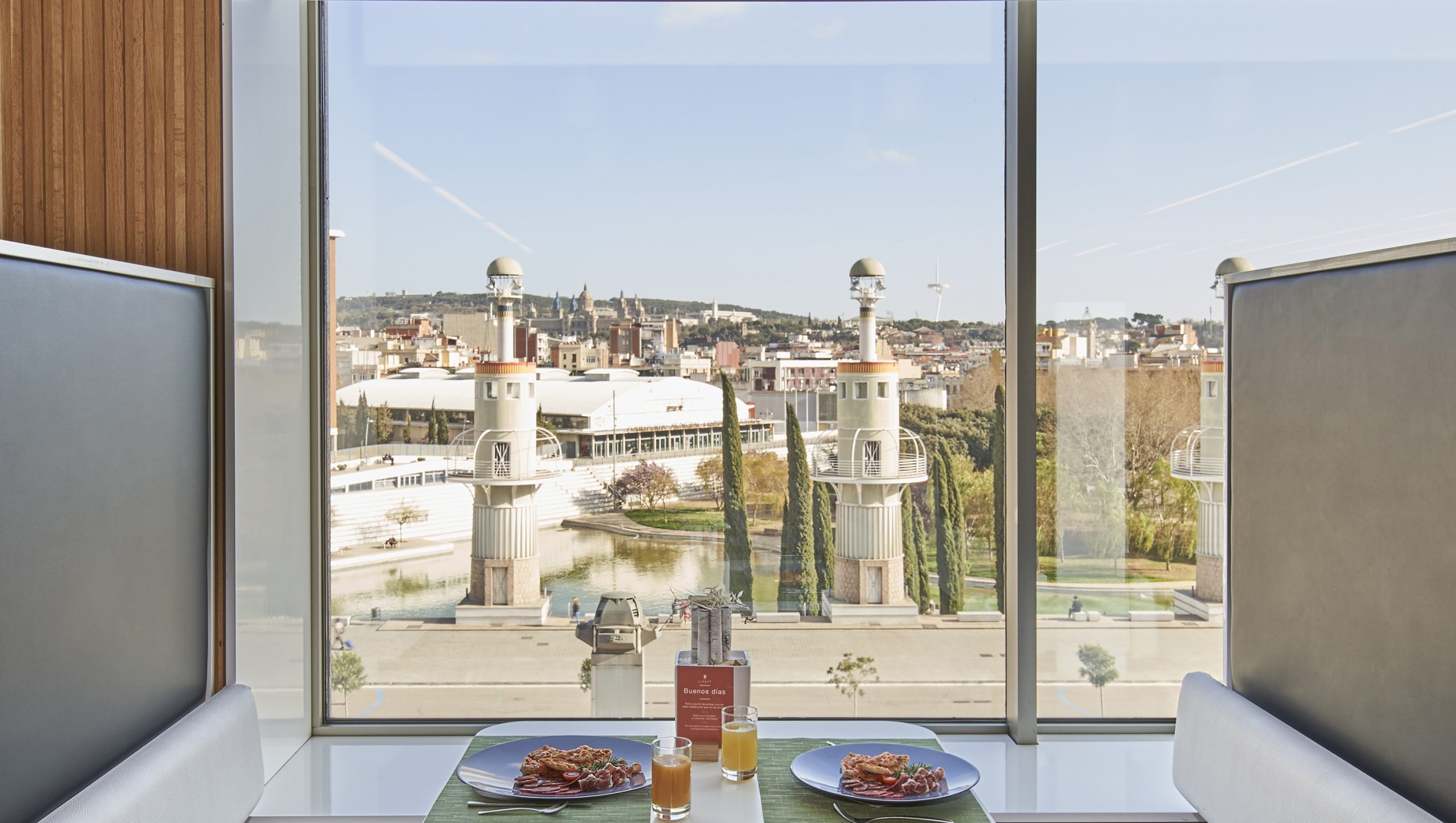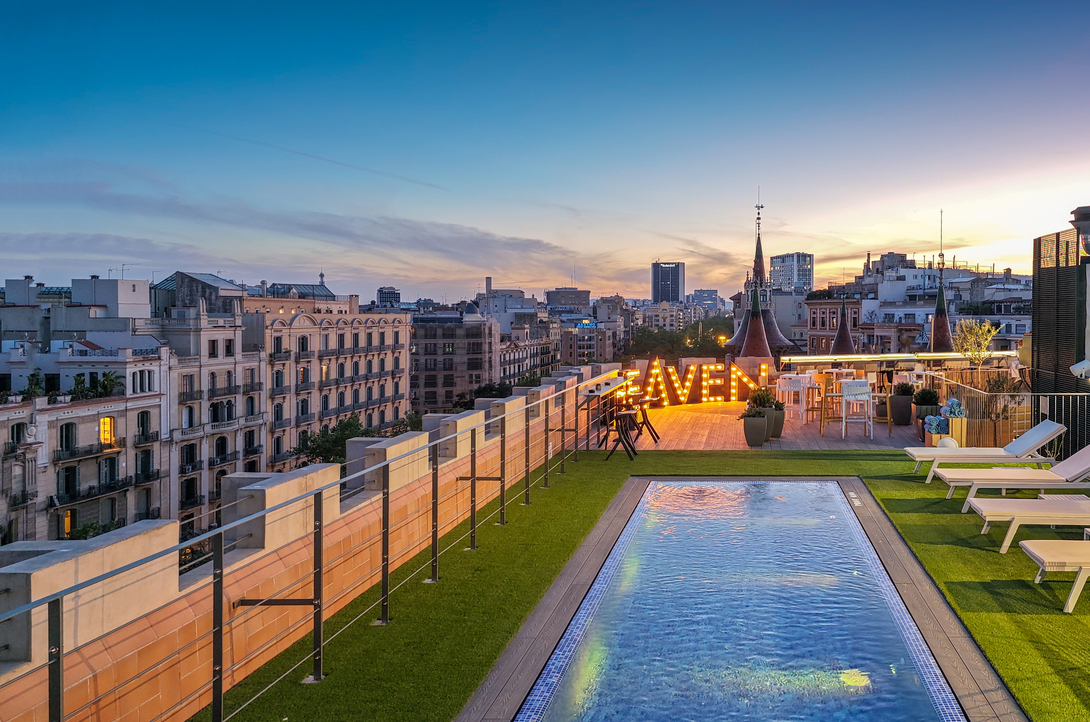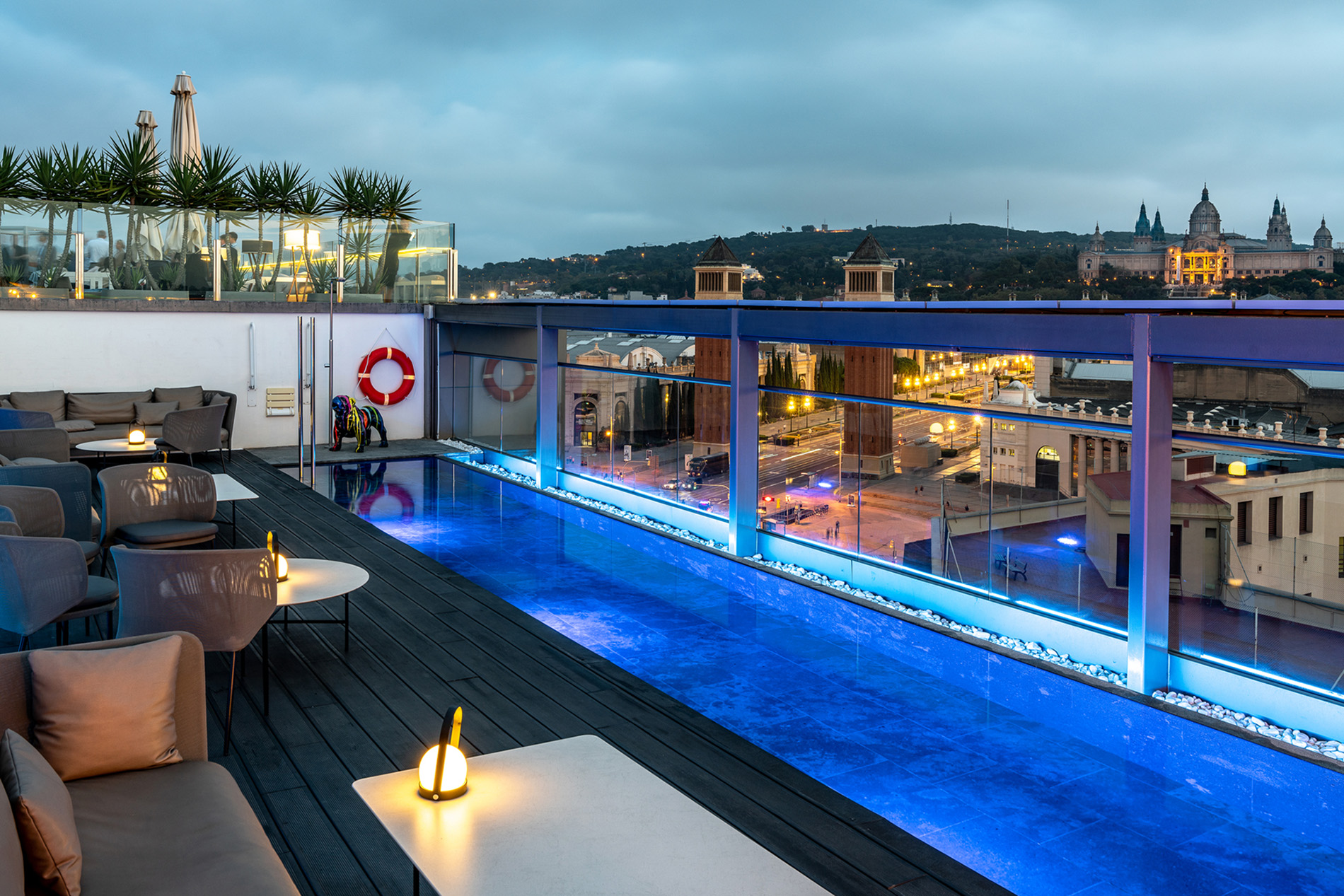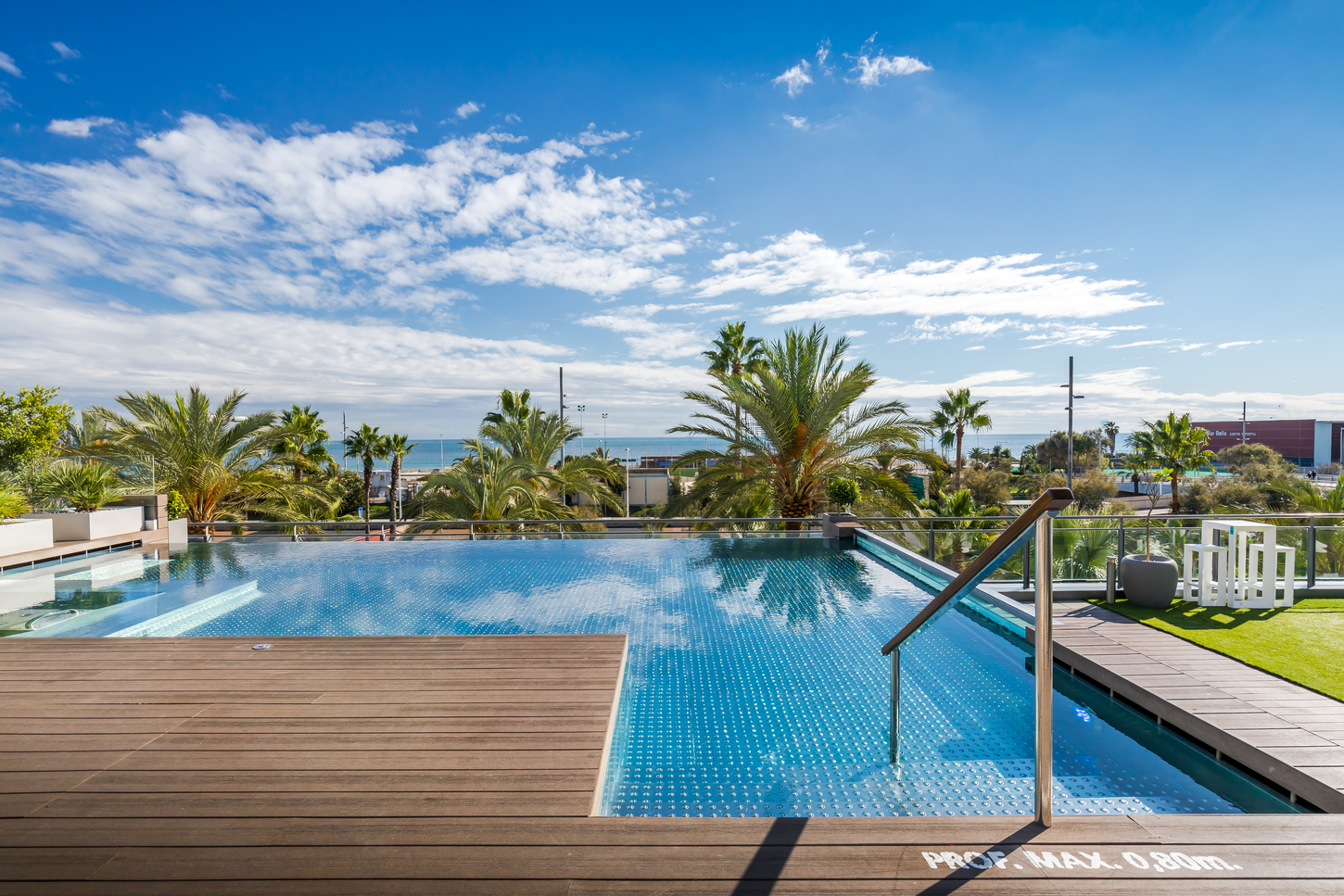The sanctuary of Montserrat is just 60 kilometres (37 miles) from Barcelona, set into the most emblematic mountain in Catalonia and surrounded by an incredible landscape that welcomes over two million visitors each year.
The origins of the abbey date from 888 and can be traced to the hermitage of Santa Maria where, according to legend, the Virgin appeared to some shepherd boys. Years later, Abbot Oliba, Bishop of Vic, ordered a monastery to be built at the hermitage. The monastery’s name is derived from two Catalan words, mont [mountain] and serrat [serrated] in honour of its dramatic setting.
The image of the Virgin of Montserrat, crowned as patron saint of Catalonia by Pope Leo XIII in 1881, is housed in a large basilica designed to welcome pilgrims.
La Moreneta
The twelfth-century Virgin of Montserrat is a highly expressive Romanesque sculpture. In Catalonia she’s popularly known as La Moreneta because the colour of her face and hands has darkened over the centuries. Tradition dictates that pilgrims should kiss or touch her right hand when they stand before her; over time this has led the colour of her hand to fade.
The image has been spared from harm during wars, fires and rebellions thanks to the safekeeping of the monks.
Montserrat Natural Park
The mountain of Montserrat was declared a Natural Park in 1987 due to its unique qualities. Over centuries, the mountains have been sculpted into a series of needles and monoliths by forces of erosion. Various legends attribute human and animal figures to these rocky formations.
The park has wonderful hiking routes in a setting that feels almost like an open-air museum created by sculptures, monuments and nature itself. Hiking trails lead to the Santa Cova [Holy Cave], the Sant Joan viewpoint and the Chapel of Sant Miquel. The Santa Cova is a chapel inside a hillside cave set into the rock where the Virgin appeared.
In the square next to the cave you’ll discover the Rosari Monumental de Montserrat, a route formed by a series of outdoor Modernist sculptures that makes a fascinating walk so don’t forget to find a map and a guidebook.
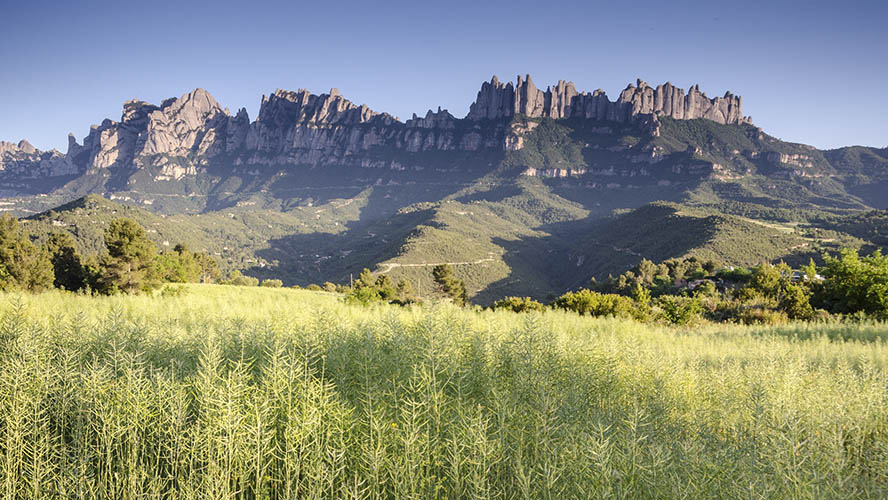
The Monestir de Montserrat
The Benedictine monastery was founded by Abbot Oliba in 1025 and its library contains over 300,000 volumes, demonstrating the important role the abbey has played in conserving and spreading knowledge about Catalan culture. Today, around 80 monks live in the monastery in devotion to prayer, welcoming the visiting pilgrims.
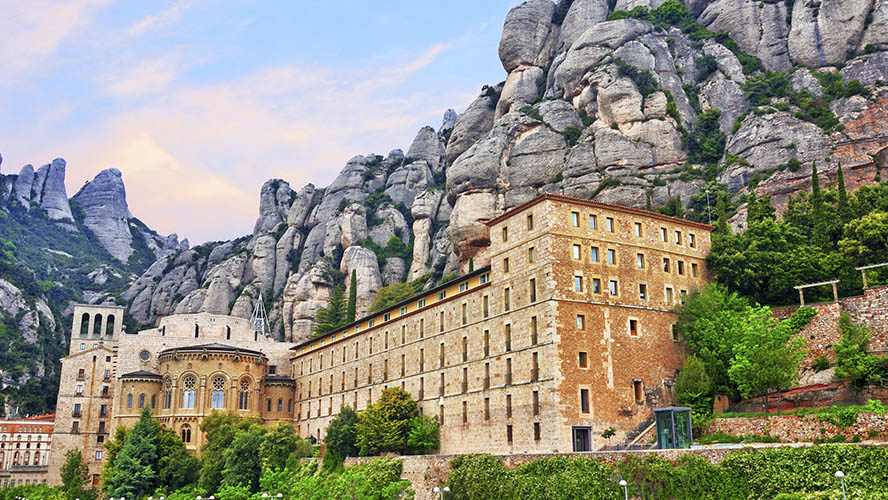
The oldest children’s choir in Europe
The Escolania de Montserrat is one of the most important and oldest children’s choirs in Europe. It was created in the fourteenth century and today is formed by around fifty choirboys who sing every day in the basilica and at celebrations held at the monastery. You can listen to them sing the Salve and the Virolai at 1:00 PM, and the Salve Montserratina—a piece that combines the choirboys’ polyphony with Gregorian chant by the monks’ choir—every afternoon at 6:45 PM from Monday to Friday. The Escolania has made several records so don’t miss your chance to take music by the children’s choir home with you.
Art from Ancient Egypt to the present day at Montserrat
The Museu de Montserrat houses over 1,300 artistic treasures with works by Picasso, Dalí and El Greco, among many others, from an Egyptian sarcophagus dating from the twenty-second century B.C. to twenty-first-century pieces. Guided visits are run for groups and there is also an audio guide service.
The museum is spread across six large permanent collections:
- Archaeology from the Biblical East: Works from Mesopotamia, Egypt, Greece, the Holy Land and Cyprus.
- Iconography dedicated to the Virgin of Santa Maria de Montserrat: Discover how portrayals of La Moreneta have evolved over the years.
- Religious gold and silverwork: Liturgical objects from the fifteenth to twentieth centuries.
- Paintings from the thirteenth to eighteenth centuries: Works by Berruguete, Caravaggio, and El Greco, among others.
- Modern painting and sculpture: Nineteenth- and twentieth-century artwork including pieces by Dalí, Monet, Degas, Le Corbusier, Miró, Picasso, Tàpies, and many more.
- Phos Hilaron: A section with 160 Byzantine and Slavic icons displayed in an Eastern church setting.
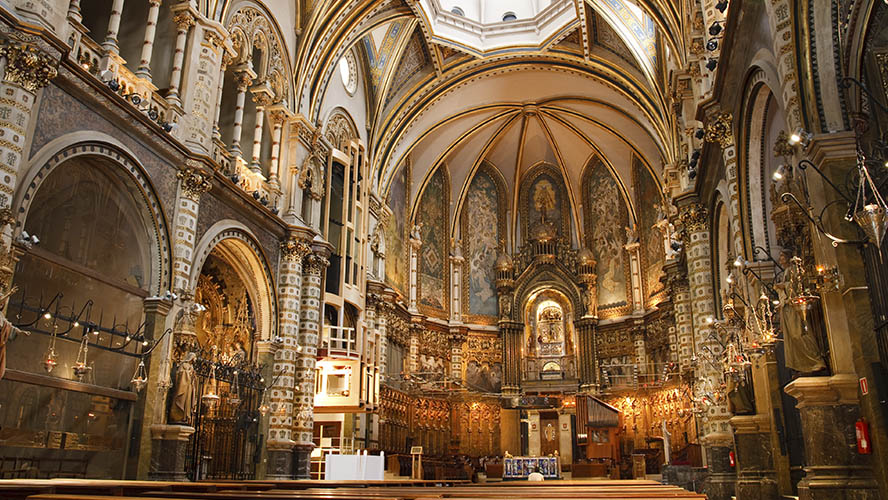
The museum also holds temporary exhibitions in the Sala Daura and Espai d’Art Pere Pruna.
The latest development is a new audiovisual space with an exhibition about the mountain, monastery and sanctuary. This display uses audiovisual resources to bring visitors closer to the meaning and importance of the Virgin of Montserrat and her monastery.
Montserrat funicular railways up the mountain
The Sant Joan and Santa Cova funicular railways make it easier to access the highest and most emblematic areas of the sanctuary such as the Sant Joan hermitage and Santa Cova where the Virgin appeared.
They have been running since the beginning of the twentieth century and climb a 65.5% slope (at its steepest point) in just seven minutes.
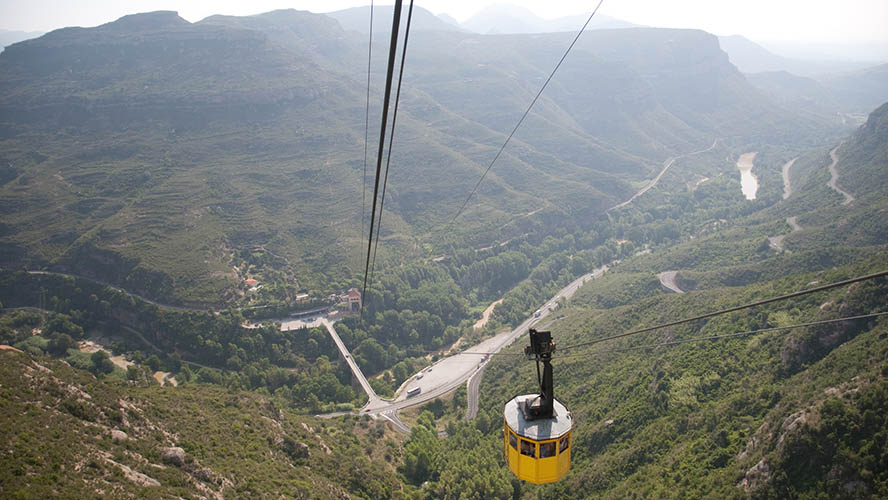
Where to eat in Montserrat
There are several options for eating during your visit to Montserrat—you can enjoy typical mountain cuisine or simply stop for a break along the way to charge your batteries.
The Montserrat restaurant opens in summer and is on the ground floor of the Mirador dels Apòstols building with a fantastic panoramic view of the mountain, Santa Cova and Llobregat valley. If you’d prefer something faster and less formal, head to the second floor and try the buffet that serves Mediterranean and international dishes.
Both the Cafetería and Bar de la Plaça sell sandwiches and drinks for a quick snack. If you prefer, you could take your own picnic and eat outdoors in the designated picnic area while admiring the unbeatable views.

























































